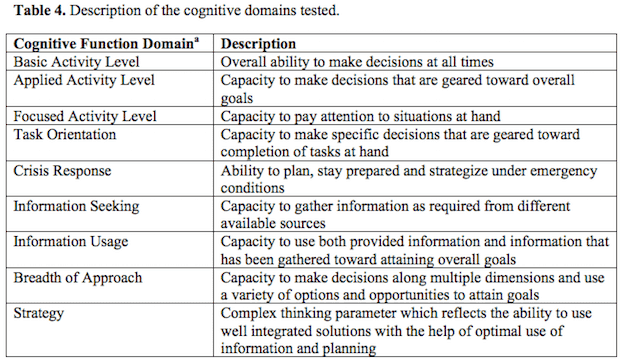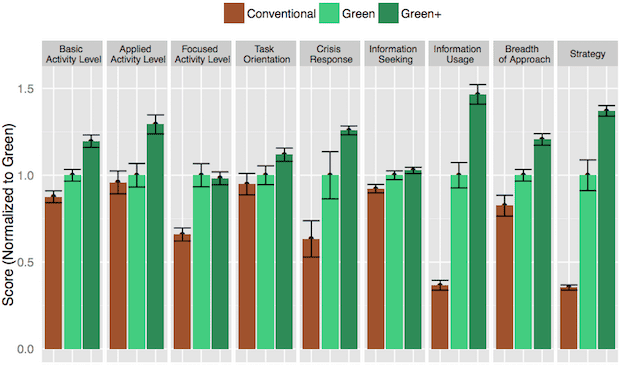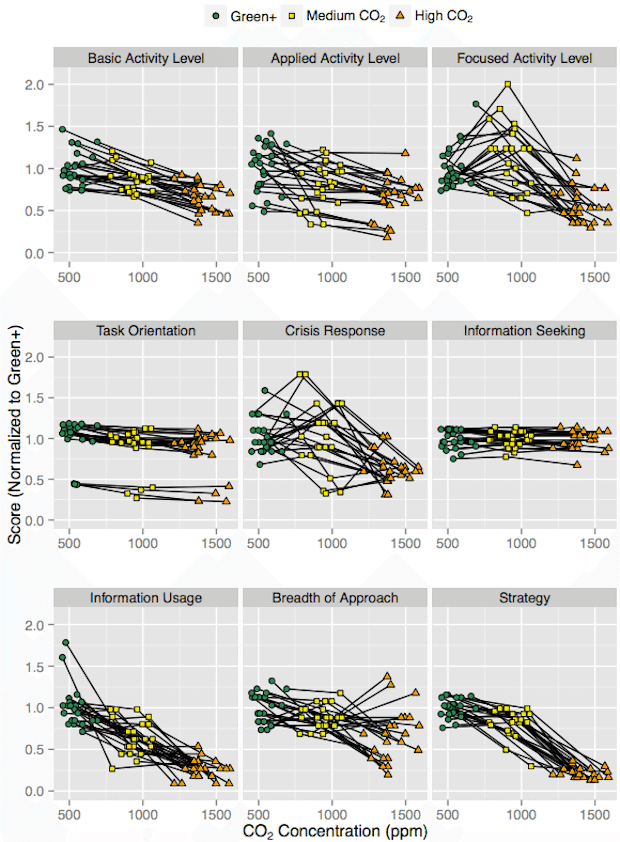Indoor Air Quality and Brain Performance

Indoor Air Quality and Brain Performance
The Harvard School of Public Health recently released results of a small study that supports what green building enthusiasts have known for years – Indoor Air Quality and Brain Performance are directly connected. While small (24 real people), the double-blind study appears to have been well crafted and executed under exacting controls. The researchers rolled out the results to an enthusiastic audience at GreenBuild 2015. While the results seem rather commonsense, I’m delighted to see Harvard and the National Institute of Health begin to pay more attention to IAQ and cognitive function.
Extrapolated across a larger population the meaning of this study may have dire consequences for the future of our civilization. While the EPA has been focusing most its regulatory efforts on outside air, and OSHA focuses only on the worst of the worst offenders, the common worker and building occupant has largely been neglected, at least in terms of governmental attention and regulation to indoor air quality (IAQ). Where regulations do exist, such as minimum required ventilation rates, they are often not enforced or regulated closely enough to ensure widespread adoption.
Six Days of Cognitive Function Testing
24 volunteers went through many different cognitive functioning tests over the course of 6 days. The only significant variables that changed were concentrations of CO2, volatile organic compounds (VOCs), and aldehydes. The chart above shows some of the primary variations tested that were meant to reflect a “green or conventional buildings.”
Cognitive Function in Plain English
The above chart illustrates nine different areas of brain function that were specifically studied. The researchers used standard testing methods to evaluate these various metrics, and it was discovered that some areas of cognitive function were more severely affected than others.
Brain Performance In Green vs Conventional Building
The charts above and below summarize the results. In almost every category the green and “green+” buildings outperform conventional and poorly ventilated spaces.
The most significant downgrades in mental performance were in crisis response, information usage, and strategy. Makes you want every police station, school, hospital, and your very own home and office to be green, doesn’t it?
Conclusion
Indoor air quality and brain performance are obviously interconnected. If too many buildings across the US have insufficient ventilation and/or high levels of harmful VOCs and aldehydes, our nation may suffer in terms of crisis response and strategic thinking. Perhaps this helps explain some comments I’ve heard in recent political debates.
There is much more research needed, but I’m thrilled this small study received so much attention and I hope it leads to additional research and policy change. In the meantime we’ll keep encouraging our green building projects to achieve good ventilation and use healthier material alternatives.






